I have been gardening for quite some time now and one thing that I’ve noticed throughout this time is that your garden will eventually get some form of pest living in it. These pests can be damaging to your plants or they can just be annoying generally it is a combination of both. One of the most common and most annoying garden pests are the house gnat. There are so many ways your garden can catch these pervasive little buggers that it is more of an inevitability than a chance. So here is how I suggest how to get rid of house gnats and how to hopefully keep them from becoming a large problem again.
What Are They
The common “House Gnat” that most people encounter when container gardening indoors is actually called Fungus Gnats. While fungus gnats are similar to fruit flies there are some key differences, mainly coloring and choice of habitat. Fungus gnats are generally darker and live in moist wet ares. Whereas, fruit flies are lighter and stay near fruit and rotting food.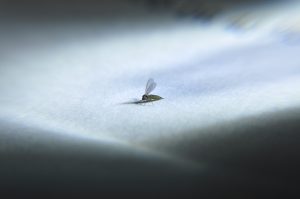
Most people realize they have a problem with fungus gnats when they see the mature adults walking on or flying around your plants. These adults while super annoying due to the fact that they are attracted to CO2 (your breath) are harmless to your plants. This unfortunately is not the same case with their larval stage.
Larval fruit gnats live in rich, damp, wet soil containing organic materials. These larvae feed on fungus, decomposing organic materials, and the fine root shoots of your plants. This destruction of your roots fine hair like tendrils can cause your plant to wilt, exhibit poor growth, lose it is vigor, or begin yellowing. In severe cases it may even kill off entire portions of your plants.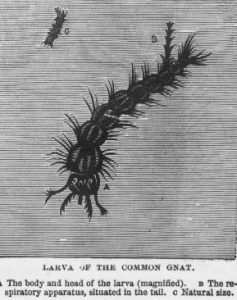
How to Prevent Them
The number one way to prevent fungus flies from thriving and creating problems is to limit the available habitat they have to reproduce and grow. The easiest way to do this is to simply water your plants appropriately. While simple in theory this idea of ideal watering is difficult to achieve in practice. The gnats thrive in the top .5 to 1.5 inches of moist or wet soil so letting this layer of soil dry out in between watering can drastically reduce the probability your garden will suffer from these pests.
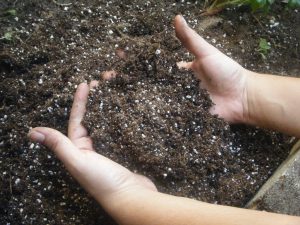
Considering how hard appropriate watering practices can be you may want to look into some modifications to your garden that can help prevent these pests from prospering. The easiest of these modifications would be to remove the top .5 to 1.5 inches of soil from your container, after your plant has matured a bit, and replacing it with sand or small rocks. This layer will drain and dry out quickly effectively removing a good portion of the gnats natural habitat. While the gnats can still get to the soil most will be fooled into thinking your plant is inhospitable. One variation I prefer to use instead of classic sand is colored sand or fish tank pebbles. They accomplish the same job just in a more colorful and complimentary fashion. The fish tank pebbles are my favorite and come in all sorts of colors.
Another modification you can make to your indoor garden to reduce the likely hood of catching the fungus gnat problem would be to convert to self watering pots. These pots water your plants roots through the bottom reservoir. By watering the bottom of your plant instead of the top you will effectively reduce the amount of habitable soil the fungus gnats have to support their larvae. I personally use both of these strategies in my home gardens. The self watering planters not only reduce the chances that you will have a fungus gnat issue they also reduce the amount of watering required and allow plants to grow to maturity in smaller containers. This combined with the fish tank rocks makes a beautiful and advantageous habitat for your plants and a disadvantageous environment for many pests including these nasty gnats.
How to Remove Organically
Unfortunately most people do not realize that they have fungus gnats until it is too late. As such, having an effective and easy way to remove them is a must have for all gardeners. There are a lot of different methods and strategies out there to get rid of a fungus gnat problem. Because this species has two main life stages it also has two separate problems.
- Adult Fungus Gnat – Getting rid of the adult fungus gnat is best done through traps. The easiest and most effective organic trap that I’ve found is a simple no escape trap with a lure in it.
-
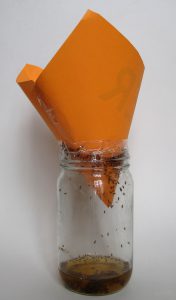 You can buy pre-made traps of this kind.they are generally in the shape of a small apple and come with their own “custom” fly lure liquid. These secret lure mixtures are mostly just vinegar. Because the containers can be washed and re-used I would suggest buying the initial pre-made trap and then re-filling them with your own lure mixture as time progresses.
You can buy pre-made traps of this kind.they are generally in the shape of a small apple and come with their own “custom” fly lure liquid. These secret lure mixtures are mostly just vinegar. Because the containers can be washed and re-used I would suggest buying the initial pre-made trap and then re-filling them with your own lure mixture as time progresses.
-
- The other option is you can create your own. These traps are simply a small container that has a lid with small holes in the tops center. Fill the container about half-way with apple cider vinegar, a drop of dish soap, and some sugar. Now that you have baited your trap simply place them where the flies are visible and watch as the container slowly fills with little floating black dots. If your choose to DIY these traps I would also suggest using a brightly colored container of just putting it on a brightly colored sheet of paper.
- The other option is you can create your own. These traps are simply a small container that has a lid with small holes in the tops center. Fill the container about half-way with apple cider vinegar, a drop of dish soap, and some sugar. Now that you have baited your trap simply place them where the flies are visible and watch as the container slowly fills with little floating black dots. If your choose to DIY these traps I would also suggest using a brightly colored container of just putting it on a brightly colored sheet of paper.
- Juvenile Fungus Gnat (larvae) – Due to the fact that the larval stage of the fungus fly lives in the soil of you plant, traps are fairly ineffective against them. The best methods I have found involve adding some form of additives to your watering regiment that while damaging to the fungus gnat larvae are harmless to your plants.
-
The most effective additive I’ve found over the year is a simple solution of hydrogen peroxide and water. Simply use a 5-1 water to peroxide mix and water your plant as you normally would. The soil will exhibit the classic hydrogen peroxide fizz for a few minutes before the peroxide fully breaks down into water. This method will directly attack the larvae.
-
- The other additives that can be used attack the fungus gnat food supply versus attacking the gnat larvae directly. A mixture of chamomile tea can be used to reduce the larvae population by reducing the availability of there main food source, fungus. Chamomile is a natural fungicide that will destroy the larvae food supply while leaving your plant unharmed. This additive also has the bonus of combating a common disease associated with fungus gnats known as dampening off.

- The other additives that can be used attack the fungus gnat food supply versus attacking the gnat larvae directly. A mixture of chamomile tea can be used to reduce the larvae population by reducing the availability of there main food source, fungus. Chamomile is a natural fungicide that will destroy the larvae food supply while leaving your plant unharmed. This additive also has the bonus of combating a common disease associated with fungus gnats known as dampening off.
-
- The final suggestion involves adding powered cinnamon to the top of your soil. Just like cham
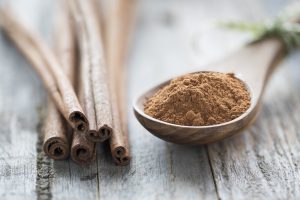 omile, cinnamon is a natural fungicide that will decrease the larvae population by removing their main source of food. Simply sprinkle a visible layer across the top of your soil every few weeks to alleviate your fungus gnats. Be aware only Ceylon cinnamon of cinnamomum verum will work.
omile, cinnamon is a natural fungicide that will decrease the larvae population by removing their main source of food. Simply sprinkle a visible layer across the top of your soil every few weeks to alleviate your fungus gnats. Be aware only Ceylon cinnamon of cinnamomum verum will work.
- The final suggestion involves adding powered cinnamon to the top of your soil. Just like cham
There are also methods that involve introducing a predator species such as nematodes. I am personally trying to reduce the number of insect visitors in my apartment so these options are not in my tool bag.
How to Remove Artificially
As with the organic methods mentioned above the fungus gnat problem really does break into two categories: adult(gnat) and Juvenile (larvae). When using non organic methods be sure to use products that are safe for your given plant. There are many options out there and some will be harmless to flowers and ornamental plants while making fruits and vegetables inedible.
- Adult Fungus Gnat – Even using non organic means the most effective method to remove the adult fungus gnat it through the use of traps.
-
Sticky traps are a widely used method for controlling all forms of flying pest. To focus on the fungus fly in particular you want to use a bright yellow trap. If creating your own sticky traps I would suggest adding a bottle cap to the center of your trap where you can add additional vinegar bait to make your trap even more effective.
-
- Due to the fact the these gnats are not strong fliers, fan and collection traps can be used as well. I really like this version of the classic trap as it not only gets these insects to fly in on their own using specific light wavelengths but also drags them in using the internal fan. Gnats will approach these traps from distance because of the attraction light and then once they are close enough to realize something might be wrong the fan sucks them in. these traps require regular emptying and cleaning if you want it to continue running at optimal levels.
- Due to the fact the these gnats are not strong fliers, fan and collection traps can be used as well. I really like this version of the classic trap as it not only gets these insects to fly in on their own using specific light wavelengths but also drags them in using the internal fan. Gnats will approach these traps from distance because of the attraction light and then once they are close enough to realize something might be wrong the fan sucks them in. these traps require regular emptying and cleaning if you want it to continue running at optimal levels.
- Juvenile Fungus Gnat (larvae) – As with the organic solutions the artificial solutions are mostly made up of additives that will be spread throughout your soil. There are a number of products out there but my top favorites include:
-
- GoGnats by Earth Juice – This is another non-poisonous liquid that can be used to manage and prevent fungus gnats. This product and root cleaner both use sodium lauryl sulfate as the main preventative. The difference between these two product is the percentage of sulfate used as well as the type of oil used as well.
-
- Houseplant and Garden Insect Killer by Garden Safe – This is a ready to use bottled spray that will kill on contact. I really like this product for killing both adult and juvenile fungus gnats. This spray kills both on contact, as such I spray a liberal amount definitely into the soil avoiding the plant as much as possible. This is definitely one of the nastier products out there killing a wide variety of insects.
- Houseplant and Garden Insect Killer by Garden Safe – This is a ready to use bottled spray that will kill on contact. I really like this product for killing both adult and juvenile fungus gnats. This spray kills both on contact, as such I spray a liberal amount definitely into the soil avoiding the plant as much as possible. This is definitely one of the nastier products out there killing a wide variety of insects.
From what I have seen through my own experiences and the information I have gained through others I have found that the main reason any of these products will not work effectively is that they require up keep and repeat treatments. Regardless of which option you decide to utilize be sure to follow through with the treatment plan as some can take about a month to fully handle the infestation.
Where I Stand on The Whole Thing
Firstly, I want to reiterate that these gnats are a problem that I have faced numerous time over the years and there is no shame in catching this pest. They can come from anywhere: new plants, newly bought soils, or even an open window and as such you need to be prepared to thoroughly destroy these critters at the first signs. These pests can quickly spread from one plant to your entire garden so preventative measures are strongly suggested and immediate action upon discovery is a must. With each new encounter with fungus gnats a new surge of hatred accompanies there discovery. These little flying nuances are annoying for us but can cause serious damage to your plants root system. Action is a must.
Please leave me a comment below if:
- you also despise fungus gnats with untold hatred
- you have any experience with any of these products
- you agree or disagree with any of my recommendations
- you known of any superior products that I should try out next
- you have any extra information you would like to share with the Apartment Growers Community
I Hope This Helped,
-Atlas







Hi Logan are these gnats just found inside or can they be found in our outdoor garden as well? The larvae are certainly a scary looking bug I would not want one of those in my house.
I certainly like the idea of putting fish tank pebbles on top of the soil. Not only does it help getting rid of them but it is also very decorative.
Also once the larvae hatch and they mature to fungus flies what is their life expectancy? Do they live longer than a fruit fly whose life expectancy is 40 to 50 days.
Thanks for the information.
Hey Maureen,
These pesky little fellas definitely grow outdoors as well. They tend to be more of a problem for indoor growers during the winter months. Temperature and moisture limit the number you find in outdoor setting but they definitely can be an issue especially if your outdoor garden is having drainage issues.
As for the life expectancy of these little buggers. The mature adult gnat only survive for about 1 week and at most 2 weeks. During that time however, they can lay up to 300 eggs. The eggs take about a week to hatch and then another 2-3 weeks to destroy your plants roots and mature into adults. The whole process has the fungus gnat from hatching to death within a span of about 4-5 weeks. This makes their lifespan slightly shorter that their lighter colored cousins but don’t be fooled thats more than enough time to do damage to your plants.
I hope this helps,
-Atlas
GNATS! The frustration of getting them to leave my succulents alone has been nothing short of mind boggling. Every time I think it’s under control, those little buggers keep coming back. Thank you for the many natural ways to curb their infiltration. It’s getting to be spring here and I’ve been gnat free all winter, but I just have a feeling that they will be making an appearance soon. I’m going to be trying the methods you mentioned, for sure!
I especially like the cinnamon method as I also use this to encourage rooting in my young cuttings. I don’t know why it works, but if it gets rid of those nasties as well, I’m all about it.